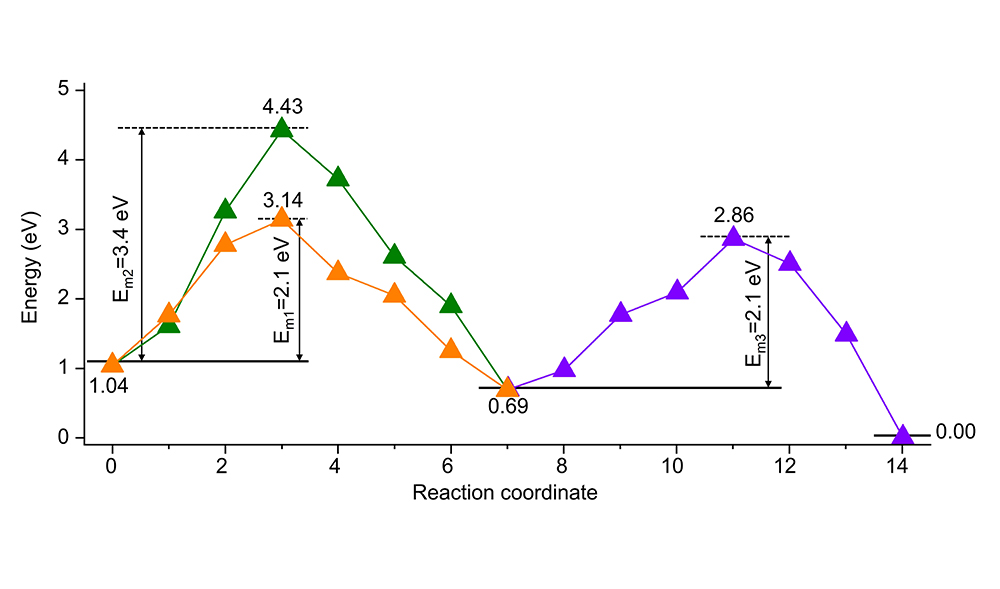
Monitoring the formation of infinite-layer transition metal oxides through in situ atomic-resolution electron microscopy

Infinite-layer transition metal oxides with two-dimensional oxygen coordination exhibit intriguing magnetic properties due to strong in-plane orbital hybridization. The synthesis of this distinctive structure has primarily relied on kinetically controlled reduction of oxygen-rich phases featuring three-dimensional polyhedral oxygen coordination. Here, using in situ atomic-resolution electron microscopy, we scrutinize the intricate atomic-scale mechanisms of oxygen conduction leading to the transformation of SrFeO2.5 to infinite-layer SrFeO2. The oxygen release is highly anisotropic and governed by the lattice reorientation aligning the fast diffusion channels towards the outlet, which is facilitated by cooperative yet shuffle displacements of iron and oxygen ions. Accompanied with the oxygen release, the three-dimensional to two-dimensional reconfiguration of oxygen is facilitated by the lattice flexibility of FeOx polyhedral layers, adopting multiple discrete transient states following the sequence determined by the least energy-costing pathways. Similar transformation mechanism may operate in cuprate and nickelate superconductors, which are isostructural with SrFeO2.
* Reference (Pusan National University)
- Authors: Inhwan Kim, Prof. Jaekwang Lee (Department of Physics)
- Title of original paper: Monitoring the formation of infinite-layer transition metal oxides through in situ atomic-resolution electron microscopy
- https://www.nature.com/articles/s41557-024-01617-7
- Journal: Nature Chemistry
- DOI: 10.1038/s41557-024-01617-7

 934이재광교수.jpg
(140KB)
934이재광교수.jpg
(140KB)